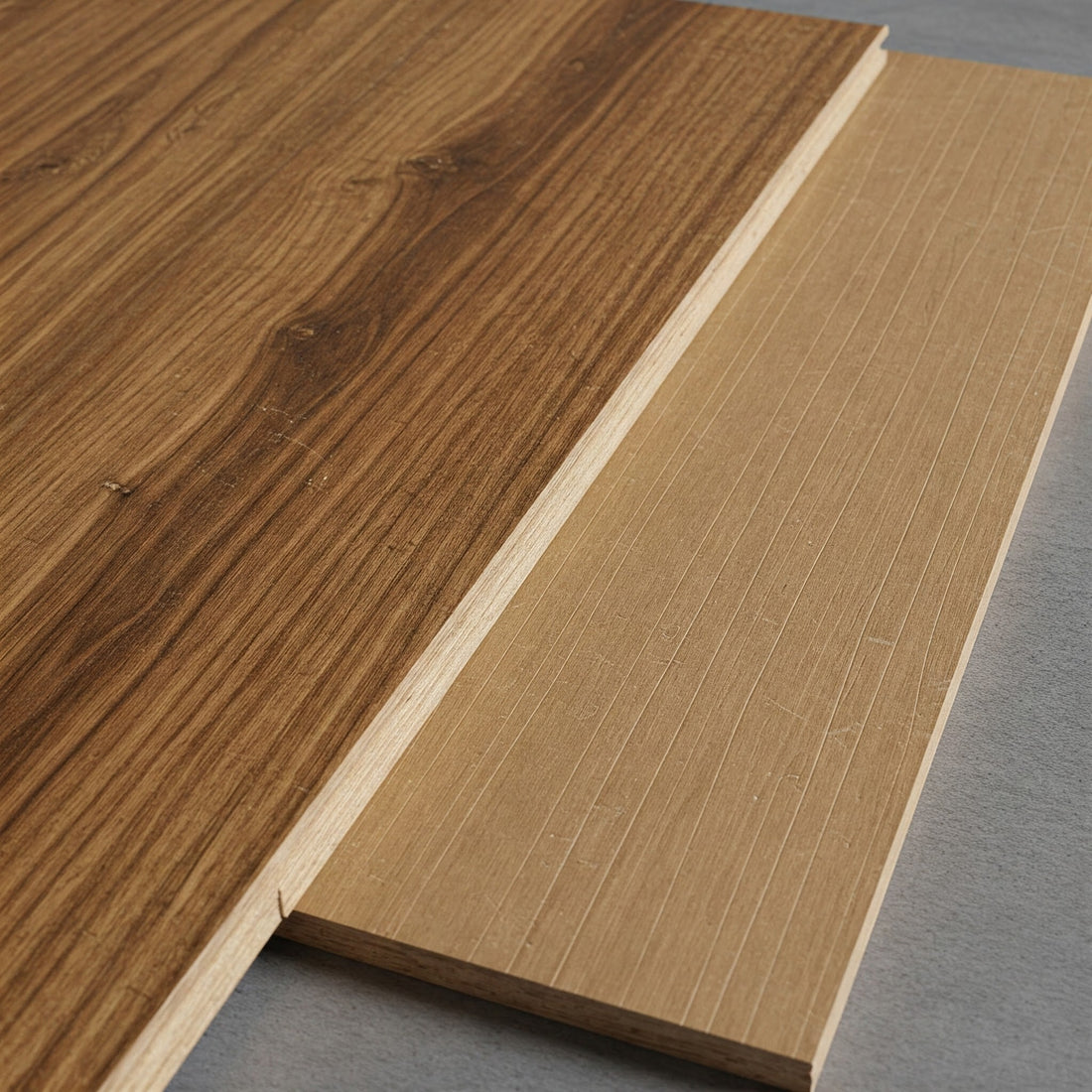
Identifying Real Wood from Imitations
Share
The allure of wood. It brings warmth, character, and a touch of nature into our homes. But in a world of clever manufacturing, what looks like wood might not always be wood. Fear not, fellow admirer of all things timber! Becoming a discerning buyer isn't as daunting as you might think. Let's delve into the fascinating world of identifying genuine wood and separating it from its convincing counterparts.
The rise of imitation wood, such as laminate, veneer, and even sophisticated plastics, stems from various factors: cost-effectiveness, durability in certain applications, and the ability to achieve consistent aesthetics. While these materials have their own merits, they lack the unique charm, longevity, and inherent value of solid wood. So, how can you become a wood detective? Here are some key clues to look for:
1. The Grain: Nature's Fingerprint
Genuine wood boasts a natural grain pattern, a unique tapestry woven by the tree's growth rings, knots, and variations in color and texture. No two pieces of solid wood will ever look exactly alike.
* Look closely: Examine the surface. Does the pattern repeat perfectly? This is a major red flag indicating a laminate or printed veneer. Real wood grain flows organically and exhibits subtle inconsistencies.
* Consider the edges: On solid wood, the grain pattern will typically continue seamlessly around corners and edges. With veneer, you might see a thin layer revealing a different material underneath, or a mitered edge where the pattern attempts to align. Laminate edges often show a distinct seam.
2. The Touch: A Sensory Experience
Your fingertips can be powerful tools in this investigation.
* Feel the texture: Real wood often has a tactile quality, with slight variations in smoothness and the occasional raised grain. Laminates tend to feel consistently smooth and often have a slightly artificial or plastic-like feel. Thicker veneers might mimic the texture of real wood better, but often lack the subtle depth.
* Consider the temperature: Solid wood generally feels neither particularly warm nor cold to the touch, adapting to the ambient temperature. Some imitation materials can feel distinctly cooler or warmer.
3. The Weight: Density Matters
Generally, solid hardwood is denser and heavier than most imitation wood products of comparable size. While some engineered woods can be quite dense, they often don't possess the same heft as their solid counterparts. Pick up the item, if possible, and get a feel for its weight relative to its size.
4. The Sound: A Solid Resonance
Give the piece a gentle tap. Solid wood tends to produce a deeper, more resonant sound. Laminates and hollow-core constructions often sound hollow or dull.
5. The Details: Construction and Finish
How the piece is constructed can offer valuable clues.
* Examine joinery: Traditional woodworking joints like dovetail, mortise and tenon, or tongue and groove are strong indicators of genuine wood craftsmanship. While some imitations might mimic these aesthetically, the underlying construction will often be different (e.g., screws and staples).
* Inspect the finish: Solid wood can be refinished multiple times, revealing new layers of its natural beauty. Laminates and veneers, on the other hand, have a thin, often non-renewable surface. Damage to these materials is usually more difficult or impossible to repair seamlessly. Look for signs of wear and tear. Does it look like the surface layer is peeling or chipping?
6. The Smell: A Subtle Hint
Real wood often has a subtle, natural woody aroma, especially when freshly cut or unfinished. Imitation wood products might have a faint chemical or plastic smell.
7. The Price Tag: An Indicator, Not a Guarantee
Generally, solid wood furniture and items are more expensive due to the cost of raw materials and the labor involved in crafting them. However, price alone isn't a foolproof indicator. High-quality veneers or intricate imitation pieces can also be costly.
Putting It All Together: The Holistic Approach
Distinguishing real wood from imitation often requires a combination of these techniques. Don't rely on just one sense or observation. Examine the grain and feel the texture. Consider the weight and listen to the sound.
By training your senses and paying attention to the details, you'll become a more confident and informed buyer. You'll be able to appreciate the genuine beauty and enduring quality of real wood while recognizing the clever illusions of its imitators. Happy hunting!
